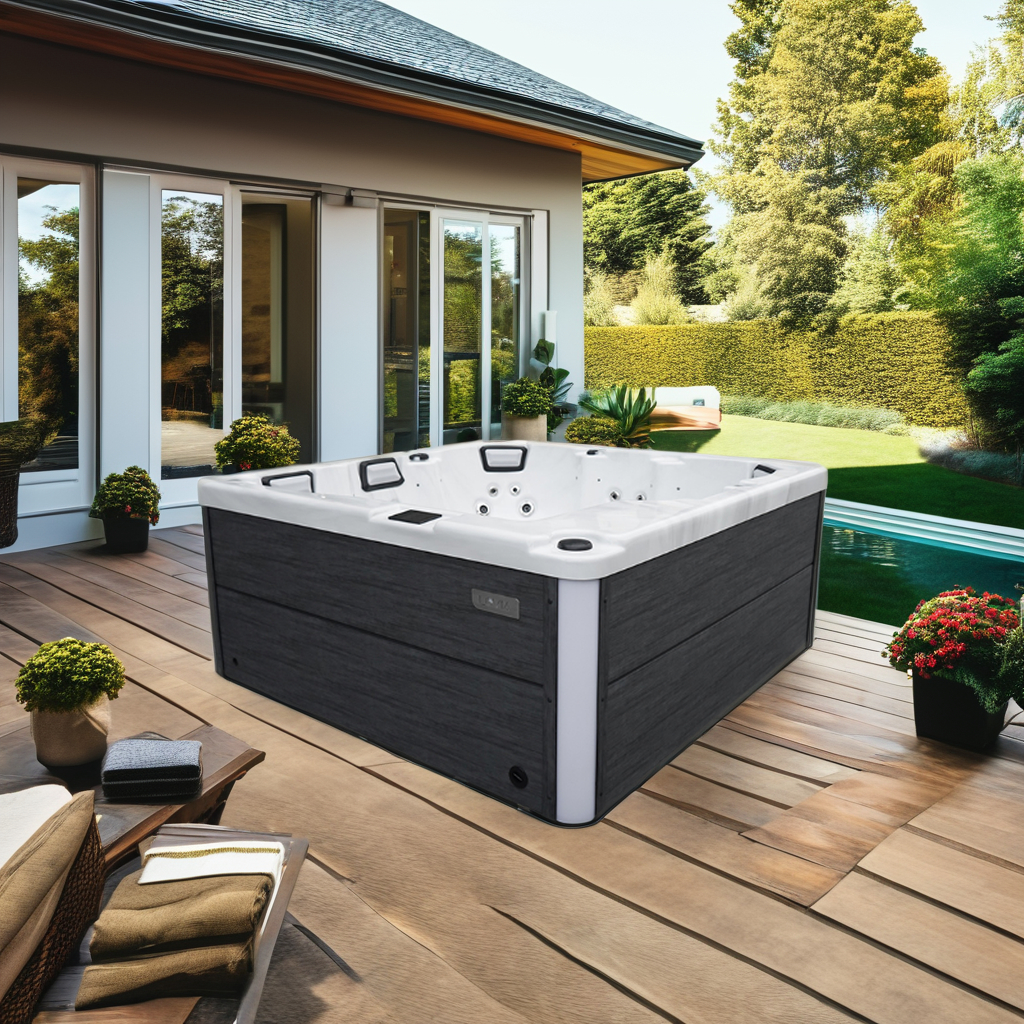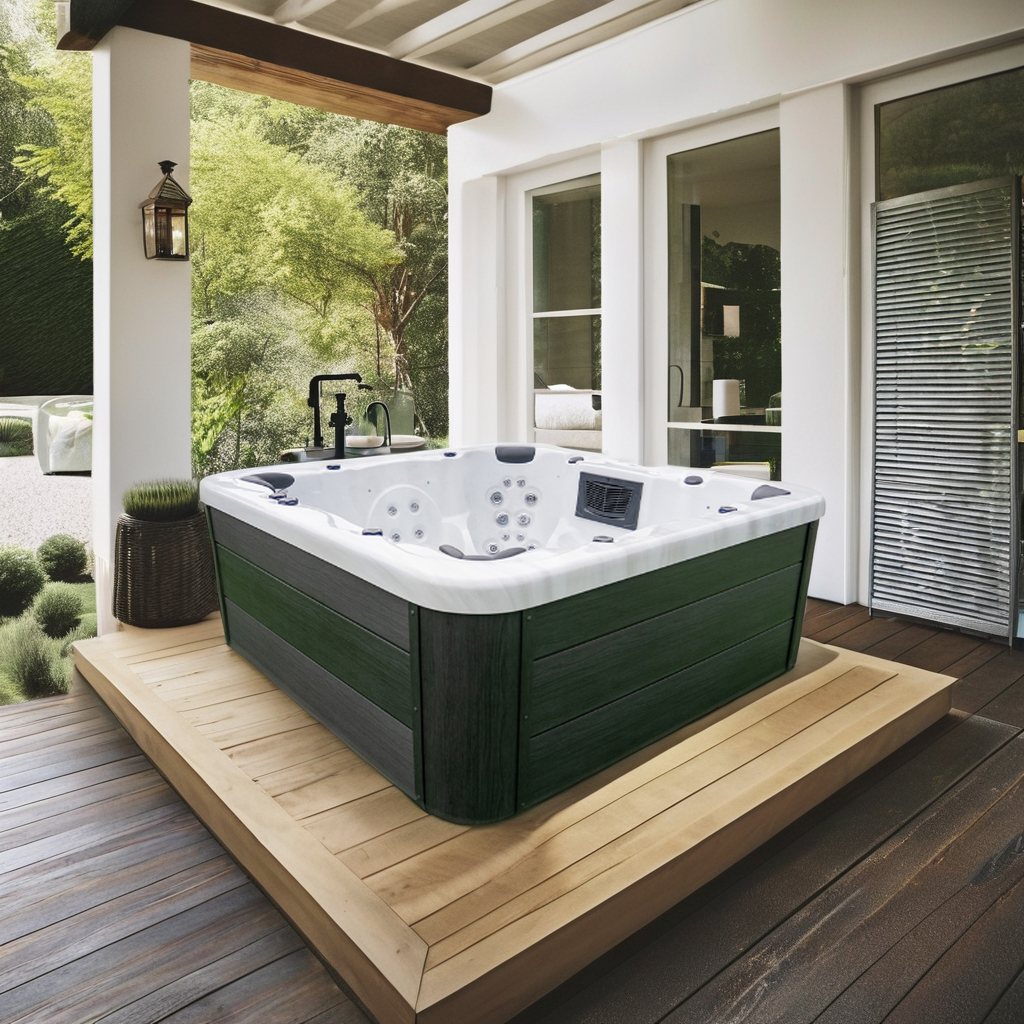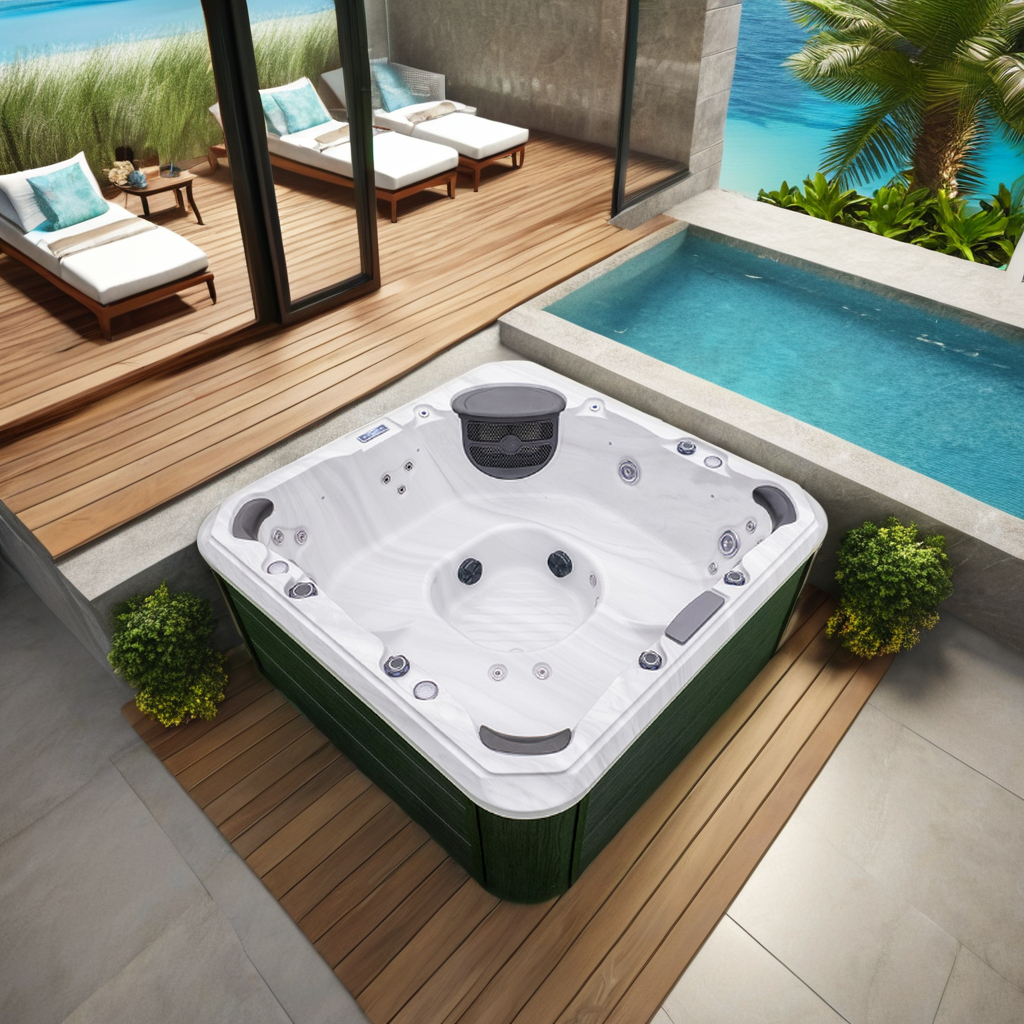
What temperature should the water in a spa massage bathtub be?
2025-09-04 15:35Spa massage bathtubs are widely used for a variety of health purposes, including relaxation, stress relief, and muscle relaxation. However, controlling the water temperature in a spa massage bathtub is crucial. Incorrect water temperature not only affects the user experience but can also pose health risks. Therefore, the question of what water temperature should be controlled at is worth exploring in depth.
This article will discuss in detail the ideal water temperature range for a spa massage bathtub, the factors that influence water temperature selection, and the potential risks of using water that is too high or too low.

What is the ideal water temperature range for a spa massage bathtub?
The water temperature in a spa massage bathtub should be adjusted based on the user's needs and safety standards. Generally speaking, a water temperature between 36°C and 38°C is optimal. This temperature range ensures comfort and effectiveness while minimizing health risks.
• 36°C to 37°C: The ideal temperature for comfort and relaxation. Most people find a water temperature between 36°C and 37°C to be the most comfortable. This temperature allows for complete relaxation, relieves muscle tension, and improves blood circulation without placing excessive strain on the heart or blood pressure. At this temperature, a spa massage bathtub can effectively exert its relaxing and soothing effects, making it ideal for relaxing muscles, reducing stress, and enhancing well-being.
• 37°C to 38°C: A warm and comfortable experience. For those who prefer a stronger thermal effect, the spa massage bathtub water temperature can be adjusted to 37°C to 38°C. This temperature range can more effectively relieve deep muscle pain and tension, and is particularly suitable for relieving muscle soreness and joint discomfort. Warm water at 38°C helps stimulate blood circulation, accelerates metabolism, and helps reduce fatigue. However, temperatures above 38°C can increase the strain on the heart and should be used with caution. Those with heart disease, in particular, should avoid prolonged soaking in a spa massage bathtub at this temperature.
• Above 38°C: Use of Hyperthermia Therapy. While water temperatures above 38°C can be used for short periods of time in certain situations (such as deep-dive treatments), prolonged immersion in hot water may have negative effects on the body. Hot water dilates blood vessels and improves blood flow, but prolonged exposure can cause dizziness, dehydration, and even heat stroke. Therefore, water temperatures above 38°C should be used with caution, and each session should not exceed 20 minutes.

What Factors Influence the Selection of Spa Massage Bathtub Water Temperature?
Choosing the right water temperature requires more than just comfort; it should be adjusted based on multiple factors. The following are some key factors influencing spa massage bathtub water temperature:
1. User Health
The user's health is a key factor in determining spa massage bathtub water temperature. For example, those with cardiovascular disease, high blood pressure, or low blood pressure should avoid using excessively hot water, as hot water dilates blood vessels, increases the workload on the heart, and may cause significant blood pressure fluctuations. For these individuals, it's best to keep the water temperature between 36°C and 37°C. If you have any health concerns, it is best to consult a doctor before use.
2. Purpose of Spa Treatment
The water temperature of a spa massage bathtub should also be determined by the intended use. For example, if the purpose is relaxation and the relief of minor muscle tension, a water temperature of 36°C to 37°C is sufficient. However, if the goal is to relieve deeper muscle pain or joint discomfort, a water temperature of 38°C may enhance the therapeutic effect. However, users should avoid prolonged immersion in overheated water to avoid overstressing the body.
3. Outdoor Temperature
In cold environments, the water temperature of a spa massage bathtub can be adjusted higher for increased comfort. Especially in winter, hot water can help counteract the cold and enhance the body's sense of comfort and warmth. In summer, when temperatures are higher, the water temperature can be lowered to avoid discomfort caused by overheating. Therefore, outdoor temperature fluctuations are an important factor influencing the water temperature setting for a spa massage bathtub.
4. Duration of Use
Duration of use also factors into the choice of water temperature. For short periods of time, the water temperature can be appropriately increased to allow the body to experience the therapeutic effects more quickly. However, for extended periods (e.g., over 20 minutes), the water temperature should be lowered to avoid overheating and discomfort. Prolonged immersion in hot water can cause skin overheating and dehydration, so ensure the water temperature is always appropriate.
What are the potential risks of using excessively hot water in a spa massage bathtub?
While warm water has positive effects such as relaxing muscles and relieving stress, excessively high water temperatures also pose certain health risks. The following are some potential risks of using excessively hot water in a spa massage bathtub:
1. Heart Pressure
Hot water causes blood vessels to dilate, increasing blood flow. When the water temperature is too high, the heart must work harder to maintain blood circulation, increasing the workload on the heart. For people with heart disease, high blood pressure, and pregnant women, excessively high water temperatures can cause cardiovascular problems, even leading to fainting or other health problems.
2. Dehydration
Prolonged immersion in hot water causes excessive sweating, increasing water loss. This dehydration can cause symptoms such as dizziness and fatigue, and can even lead to heat stroke. Overheated water can cause the body to overheat, and the human body typically lacks adequate mechanisms to cool down quickly. Therefore, prolonged immersion in hot water can cause discomfort and health problems.
3. Skin Damage
High temperature water can cause skin pores to open, and prolonged immersion can lead to dryness, allergies, and irritation. Especially for those with sensitive skin, excessively high water temperatures can exacerbate skin discomfort and even cause symptoms such as redness, swelling, and inflammation.
4. Blood Sugar Fluctuations
For diabetics, high temperature water can affect blood sugar levels. Hot water can cause blood sugar fluctuations, making blood sugar control more difficult. Excessively high water temperatures are particularly unfavorable for diabetics, and prolonged exposure to overheated water should be avoided.

What are the potential risks of using too low a water temperature in a spa massage bathtub?
Like too high a water temperature, too low a water temperature can also pose some problems. While cool water can help constrict blood vessels and relieve pain, excessively low water temperatures are not ideal for the proper function and comfort of a spa massage bathtub:
1. Reduced Hydrotherapy Effects
The hydrotherapy effects of a spa massage bathtub are often closely related to the water temperature. Water temperatures that are too low may not effectively relax muscles and relieve stress. Cold water can cause muscle contraction, reduce blood flow, and even worsen pain. The primary purpose of a spa massage bathtub is to soothe the body and mind through the warmth of hot water. Therefore, too low a water temperature can diminish the therapeutic benefits of hydrotherapy.
2. Increased Discomfort
Particularly in cold environments, too low a water temperature in a spa massage bathtub can cause discomfort. Soaking in cold water can easily lead to chills and discomfort, potentially causing shivering and muscle stiffness. Cold water can also impair blood circulation, further increasing discomfort.
3. Impaired Blood Circulation
Cold water can cause blood vessels to constrict, reducing blood flow, which can be detrimental to circulation and metabolism. While cold water can help relieve local inflammation and swelling, it's not suitable for general relaxation and circulation-enhancing uses in a spa massage bathtub.
How can I accurately control the water temperature in a spa massage bathtub?
1. Use a built-in temperature control system
Modern spa massage bathtubs are often equipped with advanced temperature control systems, allowing users to precisely adjust the temperature to their needs. These systems use electronic controllers to precisely adjust the water temperature, ensuring it remains within the ideal range. These systems allow users to customize the water temperature to their needs, providing a comfortable and relaxing experience while avoiding the health risks of excessively high or low temperatures.
2. Use a thermometer to check the water temperature
Although most modern spa massage bathtubs have temperature control systems, if you are concerned about the water temperature being inaccurate, you can use a thermometer to check the water temperature. The ideal water temperature in a spa massage bathtub is 36°C to 38°C, and using a thermometer can help ensure the accuracy of the temperature setting.
3. Be aware of water temperature fluctuations
The water temperature may fluctuate, especially in cold weather or after prolonged use. It is essential to promptly check and adjust the water temperature. After prolonged soaking, the water temperature may drop due to factors such as evaporation and heat loss, necessitating additional heating.

How do you support new distributors or spa retailers?
We provide full support to new partners, including marketing materials, training guides, installation manuals, and after-sales assistance. Our competitive factory pricing, promotional offers, and low MOQ for trial orders make it easy to get started.
If you're planning to buy spa products in bulk or develop your own brand, we offer OEM/ODM services, sales guidance, and fast quote processing to help you succeed.
